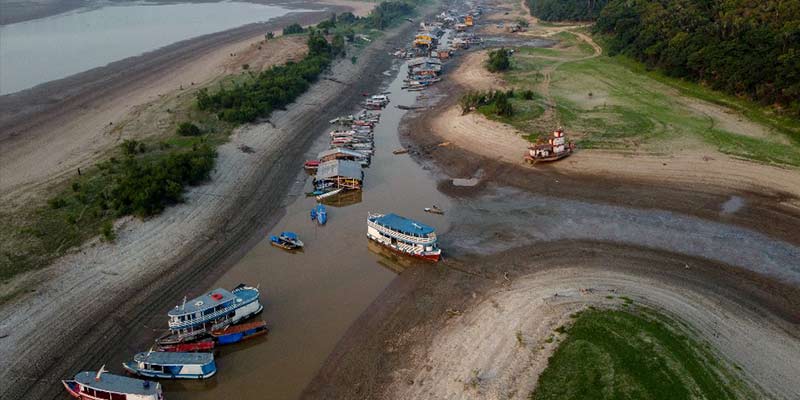- World
- Oct 18
Amazon River falls to lowest in over a century amid Brazil drought
• The Amazon River fell to its lowest level in over a century at the heart of the Brazilian rainforest as a record drought upends the lives of hundreds of thousands of people and damages the jungle ecosystem.
• Rapidly drying tributaries to the mighty Amazon have left boats stranded, cutting off food and water supplies to remote villages, while high water temperatures are suspected of killing more than 100 endangered river dolphins.
• The port of Manaus, the region’s most populous city, at the meeting of the Rio Negro and the Amazon River, recorded 13.59 meters (44.6 ft) of water on October 16. That is the lowest level since records began in 1902, passing a previous all-time low set in 2010.
• Madeira River, another main tributary of the Amazon, has also recorded historically low levels, causing the halt of the Santo Antonio hydroelectric dam, Brazil’s fourth largest.
• Some areas of the Amazon have seen the least rain from July to September since 1980, according to the Brazilian government disaster alert center, Cemaden.
• Brazil’s science ministry blames the drought on this year’s onset of the El Nino climate phenomenon, which is driving extreme weather patterns globally.
• The drought has affected 481,000 people.
• Manaus is the largest city and capital of Amazonas, the state hit hardest by the drought in Brazil.
Amazon River
• The Amazon River begins its journey in the Andes and makes its way east through six South American countries before emptying into the Atlantic Ocean on the northeast coast of Brazil.
• The river has a length of around 6,400 km – the equivalent of the distance from New York City to Rome.
• With more than 1,000 tributaries, the Amazon River is the largest drainage system in the world in terms of the volume of its flow and the area of its basin.
• The Amazon is one of the widest rivers in the world with a width of between 1.6 and 10 km, but expands during the wet season to around 50 km.
• Amazon rainforest is the world’s largest tropical rainforest occupying the drainage basin of the Amazon River and its tributaries in northern South America and covers an area of 6,000,000 square km. The Amazon forest is said to produce about 20 per cent of earth’s oxygen and is also often referred to as “the planet’s lungs”.
Manorama Yearbook app is now available on Google Play Store and iOS App Store

